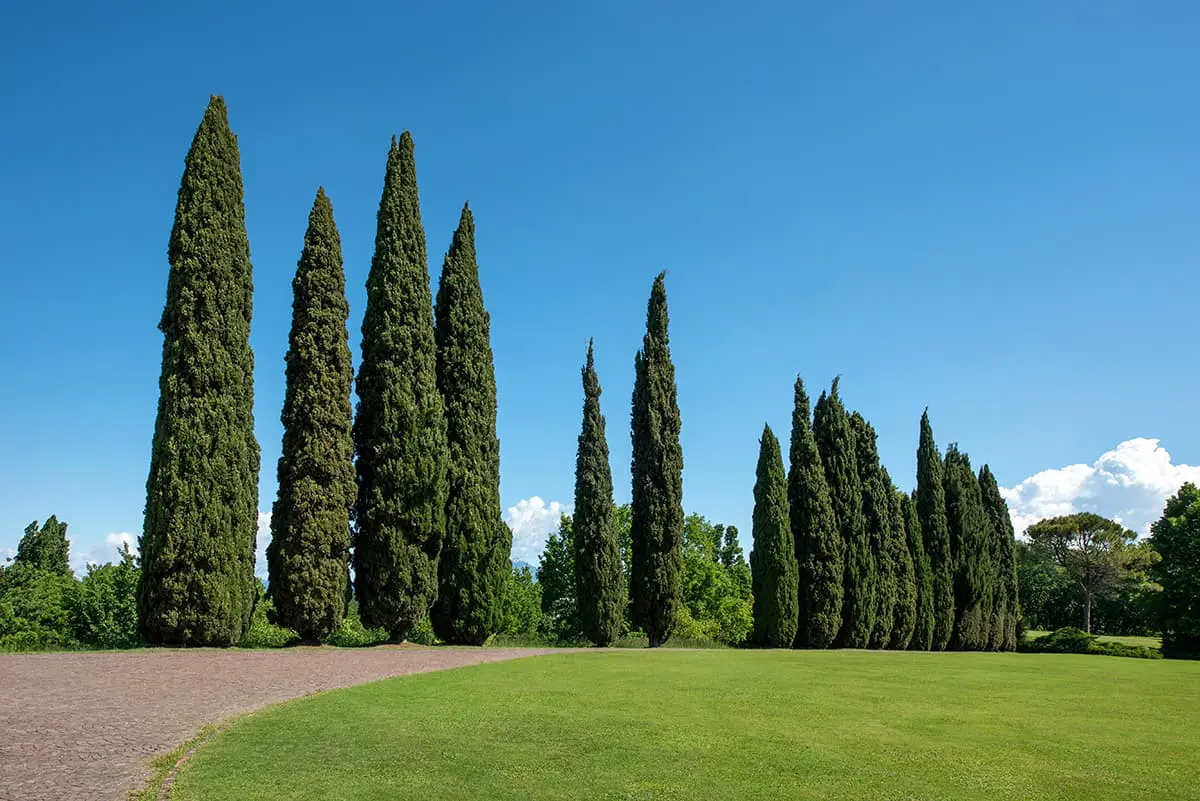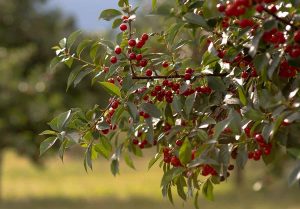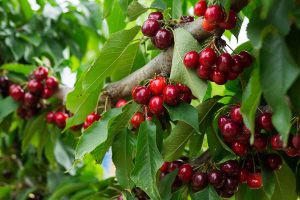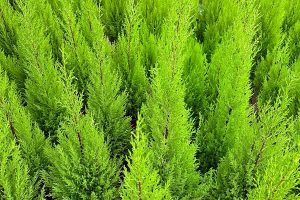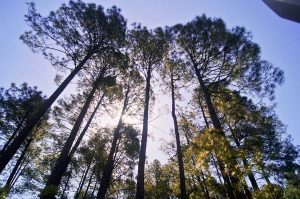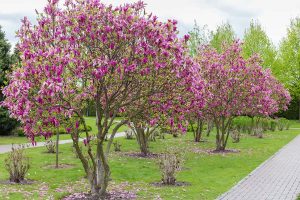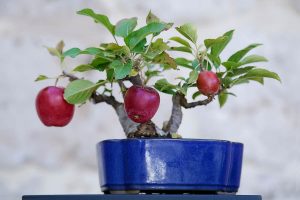Cypress trees are evergreen conifers that belong to the Cupressaceae family and the Cupressus genus. Different types of cypress trees are found growing natively in various countries around the world, but generally, they tend to be best suited to hot climates.
Here we look at a range of cypress trees and explore their backgrounds, their physical features, and their growing conditions.
Table of Contents
Arizona Cypress
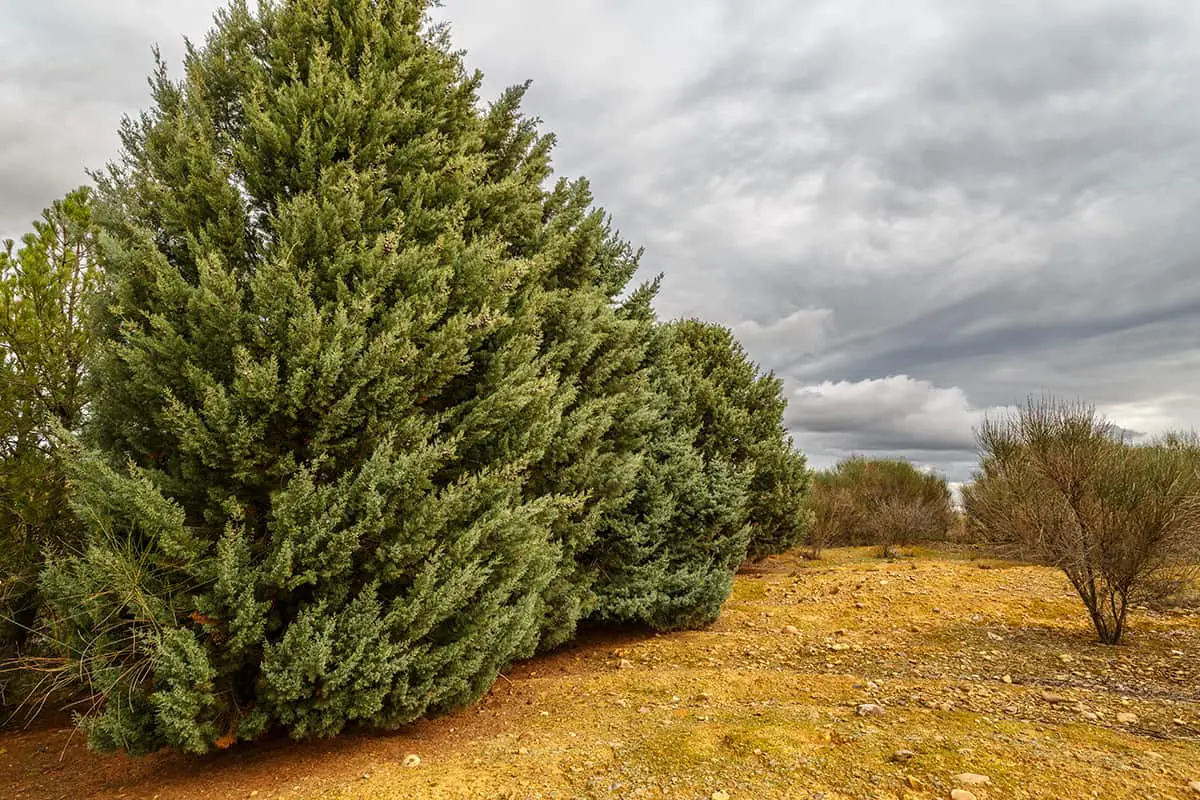
- Botanical name: Cupressus arizonica
- Common names: Arizona Cypress
- Plant family: Cupressaceae
- USDA hardiness zone: 7 – 9
- Mature height: Up to 50 feet
- Mature spread: Up to 30 feet
Background
The Arizona Cypress tree is a coniferous evergreen that is native to the southwestern United States and Mexico, where it is the only native type of cypress. It was discovered fairly recently, in the late 1800’s, by E. L. Greene. It does not grow to form forests like many other types of cypress and instead is found growing in random spots of small groups of trees.
This tree has good resistance to diseases such as cypress canker, which makes it a good alternative to those which are more vulnerable, like the Monterey Cypress. It is popularly used as a Christmas tree and can also be planted to prevent soil erosion or as a windbreak.
Physical Qualities
This tree grows at a medium rate, gaining between 1 and 2 feet in height each year. When mature, it forms a pyramid shape, which is one of the reasons why it works so well as a Christmas tree. It has overlapping scale-like needles in a gray-green shade, and these have a strong woody aroma and are soft to the touch.
It produces cones in shades of red and brown, which take around two years to mature. Once matured, the cones can remain on the tree for several more years. The cones are quite wide, with a diameter of a little over one inch at their widest point. They release seeds which are a source of food for local rodents, including squirrels.
The trunk of the tree is covered in rough, gray bark, and this is the key distinguishing feature between the Arizona Cypress and the closely related Smooth Arizona Cypress (Cypressus arizonica var. glabra), which has a smooth papery bark in purple-red.
Growing Conditions
As you might expect, considering the native environment of the Arizona Cypress, it is able to withstand hot and dry conditions. Once established, it will tolerate significant stretches of drought.
This is a full-sun tree, which requires at least 6 hours of direct sun each day to thrive. It grows well in a range of soil types, including both acidic and alkaline soils, along with soils that are sandy or loamy. The soil around the Arizona Cypress should be well-draining since the tree won’t fare well in waterlogged conditions.
Moroccan Cypress
- Botanical name: Cupressus atlantica, or Cupressus dupreziana var. atlantica
- Common names: Moroccan Cypress, Atlantic Cypress, Tarout Tree
- Plant family: Cupressaceae
- USDA hardiness zone: 7 -10
- Mature height: Up to 100 feet
- Mature spread: Up to 20 feet
Background
The classification of the Moroccan Cypress is disputed by some authors who claim it is a variation of the Saharan Cypress (Cupressus dupreziana), however, these two species have distinctly different reproductive systems. The Moroccan Cypress is a critically endangered species that is endemic to Western Mexico in the High Atlas Mountains south of Marrakech.
Most of the remaining Moroccan Cypress trees growing in this region are very old, and there is a lack of regeneration occurring due to nearby grazing mountain goats. It is believed that the Moroccan Cypress is one of the longest-lived cypress trees, with an expected lifespan of 2000 years.
Physical Qualities
This evergreen conifer grows to form an upright conical shape, with foliage in an attractive shade of blue-green. The cones on this tree are almost perfectly spherical, and they are quite small at around half an inch across.
Growing Conditions
The Moroccan Cypress tree has a high heat tolerance and can withstand periods of drought. It thrives in full sun and should be grown in soil that is well draining.
Chinese Weeping Cypress
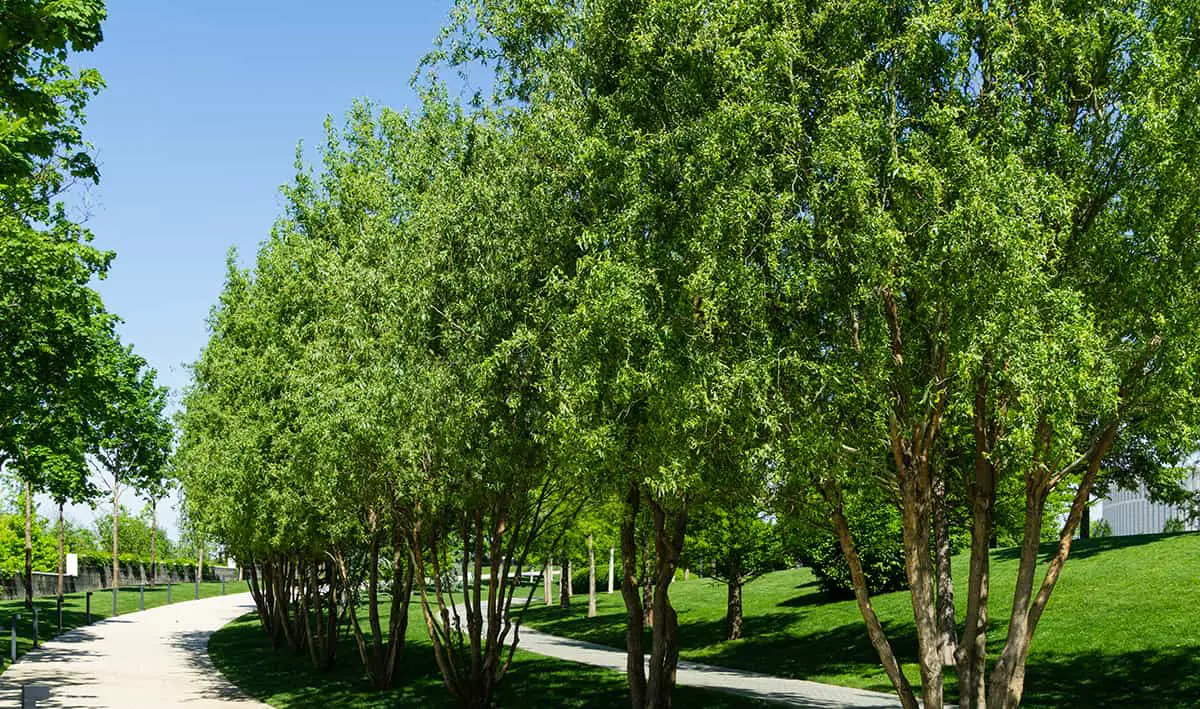
- Botanical name: Cupressus funebris
- Common names: Chinese Weeping Cypress, Mourning Cypress
- Plant family: Cupressaceae
- USDA hardiness zone: 7 – 10
- Mature height: Up to 80 feet
- Mature spread: Up to 30 feet
Background
This evergreen conifer is native to China, though its exact native region is uncertain due to high levels of cultivation throughout history. It is widely used as an ornamental tree due to its graceful appearance with gently drooping branches. It is also cultivated outside of Asia in warm climates as a park tree. It can also be grown as a houseplant in cold climates.
The tree does not have much resistance against insect infestations, and it is also vulnerable to honey fungus. In China, the Chinese Weeping Cypress is cultivated for its timber.
Physical Qualities
The Chinese Weeping Cypress is draped with long sprays of flattened foliage. The scale-like leaves are soft when young and have a bright green color that doesn’t fade. If the leaves are crushed, they will emit an aroma reminiscent of cut grass. Flowers arrive in April and May, and these are pollinated by the wind.
The tree produces green cones measuring around half an inch across, and these take on a deep shade of brown when they mature two years after being pollinated. Once mature, the cones burst open and spread their seeds.
Some cones which remain closed will cling onto the tree for many years, only bursting open under the intense heat of a forest fire. The heated cones will spread their seeds, and new trees will grow especially well in the ash-covered ground.
Growing Conditions
This tree will grow in a wide range of soils as long as they drain well. It will tolerate heavily acidic soils and mildly alkaline soils. The tree should be grown in full sun and cannot tolerate shade.
It is both heat and drought-tolerant, though extended periods of drought will make the tree more vulnerable to insect problems.
Monterey Cypress
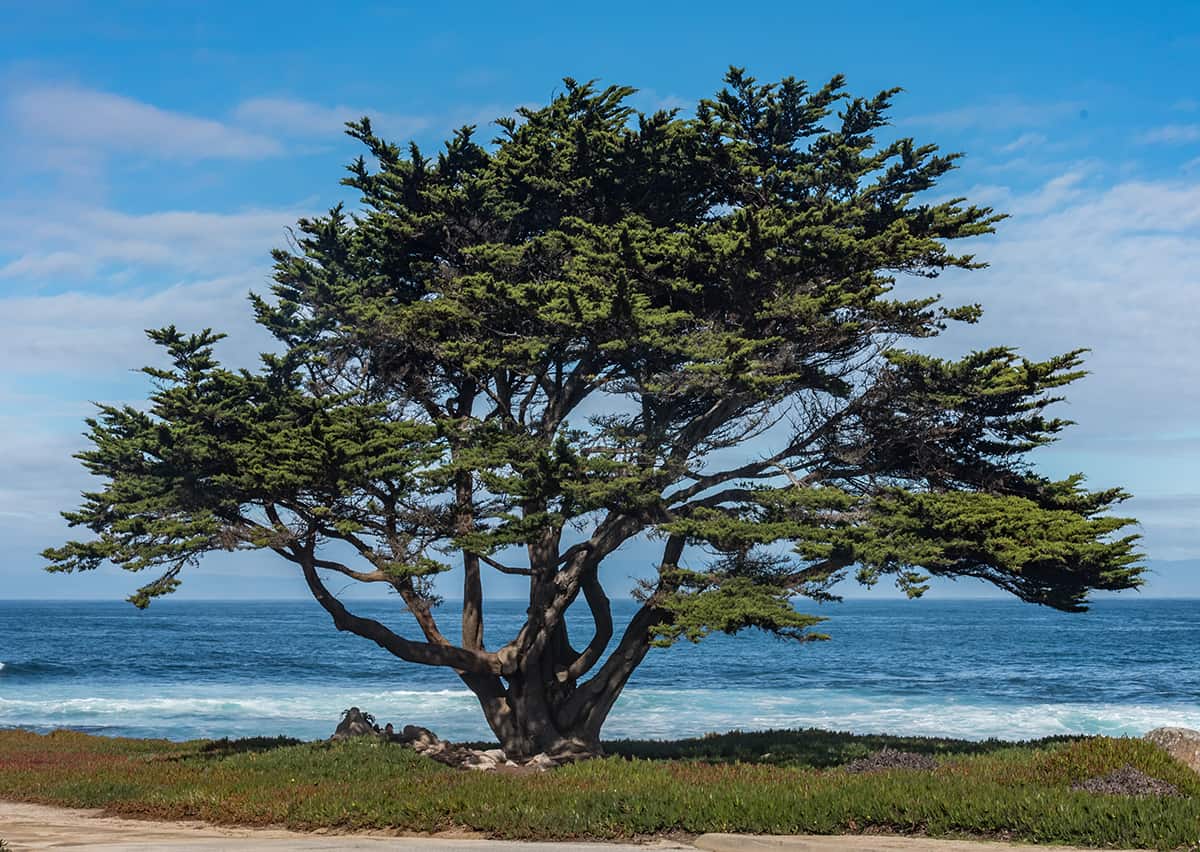
- Botanical name: Cupressus macrocarpa
- Common names: Monterey Cypress
- Plant family: Cupressaceae
- USDA hardiness zone: 7 – 11
- Mature height: Up to 70 feet
- Mature spread: Up to 80 feet
Background
Endemic to the coastline of California in the US, the Monterey Cypress is a fast-growing coniferous evergreen. It is extremely tolerant of high winds, and the resulting shape of the tree is heavily influenced by the strength and direction of the coastal wind. The wind resistance of this tree makes it very useful as a windbreak, especially in regions close to the ocean.
The impressive resistance to the wind is the reason why Monterey Cypress trees are widely planted in southern Australia as protection against the high winds.
Physical Qualities
This tree has a pyramid shape when young, but as it matures, it takes on a more widely spreading canopy and an irregular shape. The shape is heavily influenced by the wind, and the total width of the canopy can span as much as 80 feet. The foliage is scale-like and fresh green when young, maturing to dark green with age, maintaining its color throughout the year.
The ridged bark of the tree is red-brown, and it splits in places and takes on a faded gray shade. Spherical cones emerge on short stems with a textured surface in brown-green. These mature to a darker brown when they mature at around two years.
Growing Conditions
The Monterey Cypress should be grown in full sun, in a well-draining soil which is kept evenly moist. The tree can withstand periods of drought and grows particularly well in coastal gardens.
Italian Cypress

- Botanical name: Cupressus sempervirens
- Common names: Italian Cypress, Pencil Pine, Tuscan Cypress, Persian Cypress, Mediterranean cypress
- Plant family: Cupressaceae
- USDA hardiness zone: 7 – 9
- Mature height: Up to 70 feet
- Mature spread: Up to 20 feet
Background
This evergreen tree is native to a large portion of the eastern Mediterranean region, including France, Spain, Italy, Bulgaria, Albania, Libya, Turkey, Cyprus, Malta, Syria, and Iran. It is a long-lived tree, with some examples dating back as far back as 1000 years. It is widely cultivated across the world as an ornamental tree, owing to its striking architectural shape.
It is also renowned for producing strong and pleasantly scented timber, and it was an Italian Cypress which was famously used to construct the doors in the Vatican. Italian Cypress trees are also used in the making of some cosmetics.
Physical Qualities
The Italian Cypress is easily recognizable, taking a tall and slender shape that is said to look like an exclamation in the landscape. It produces scale-like leaves in dark green, which are arranged on short, dense sprays on horizontal branches.
The female cones are quite small at around an inch in length, while the male cones are even more dainty at around a quarter of an inch long. The seed cones start out green but develop to dark brown by maturity, which is around two years after pollination.
Growing Conditions
These trees need to be grown in a position of full sun and prefer hot and moderately moist conditions. Once mature, they will tolerate drought, and they can also tolerate humidity.
Italian Cypress trees should be planted in well-draining soil types, either in containers or directly in the ground. They need protection from heavy wind because they will simply topple over in a strong breeze.
Saharan Cypress
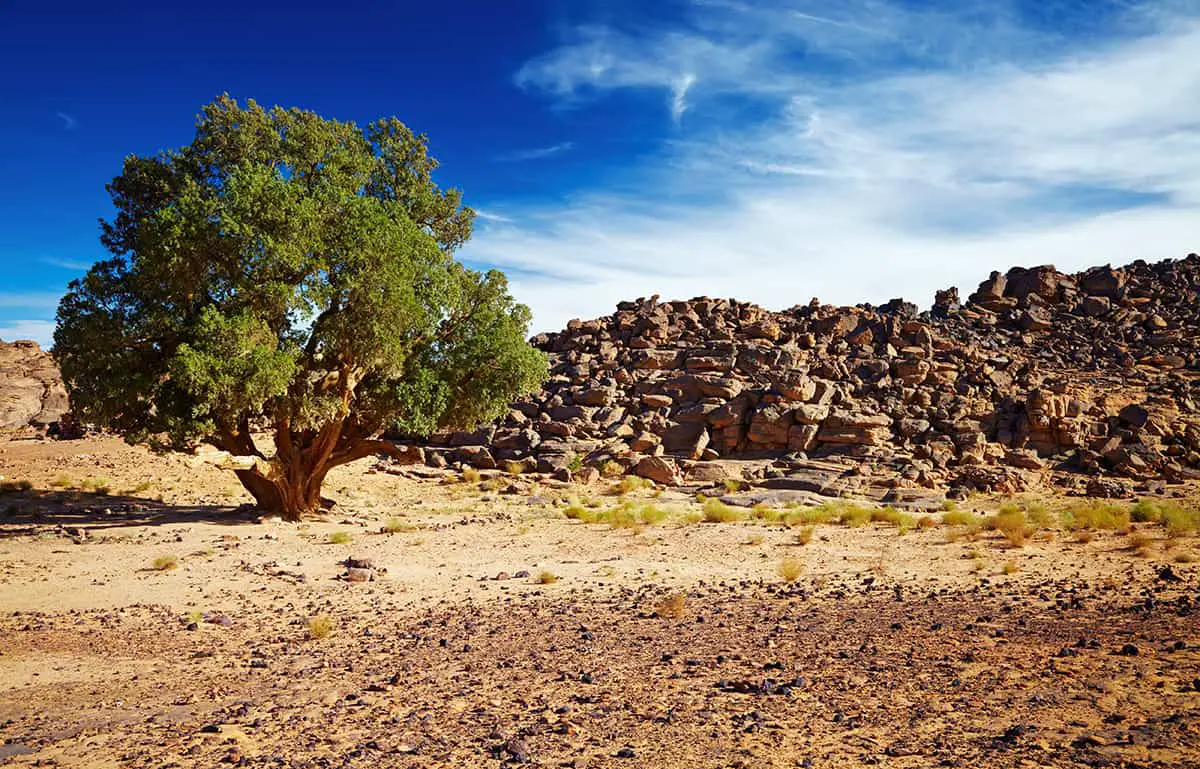
- Botanical name: Cupressus dupreziana
- Common names: Saharan Cypress, Tarout Tree
- Plant family: Cupressaceae
- USDA hardiness zone: 7 – 11
- Mature height: Up to 60 feet
- Mature spread: Up to 30 feet
Background
This is a rare and endangered tree that is native to the mountainous region of Tassili n’Ajjer in the middle of the Sahara desert in Algeria. There are less than 250 surviving specimens of Sahara Cypress, and most of them are believed to be over 2000 years old.
The tallest surviving tree is a little over 70 feet in height, with a trunk diameter of 36 feet. This species is in danger of extinction because very little regeneration is happening as a result of the degradation of the land.
Physical Qualities
The Saharan Cypress produces flat sprays of blue-green foliage and small cones measuring between half an inch and an inch in length. They possess a unique reproductive trait whereby the male seeds can develop with no input from their female counterpart.
Growing Conditions
This is a very tough tree that is well adapted to hot and dry conditions. Saharan Cypress trees growing in their native habitat will survive on just an inch of rainfall per year. They thrive in full sun and well-draining soils.
Mexican Cypress
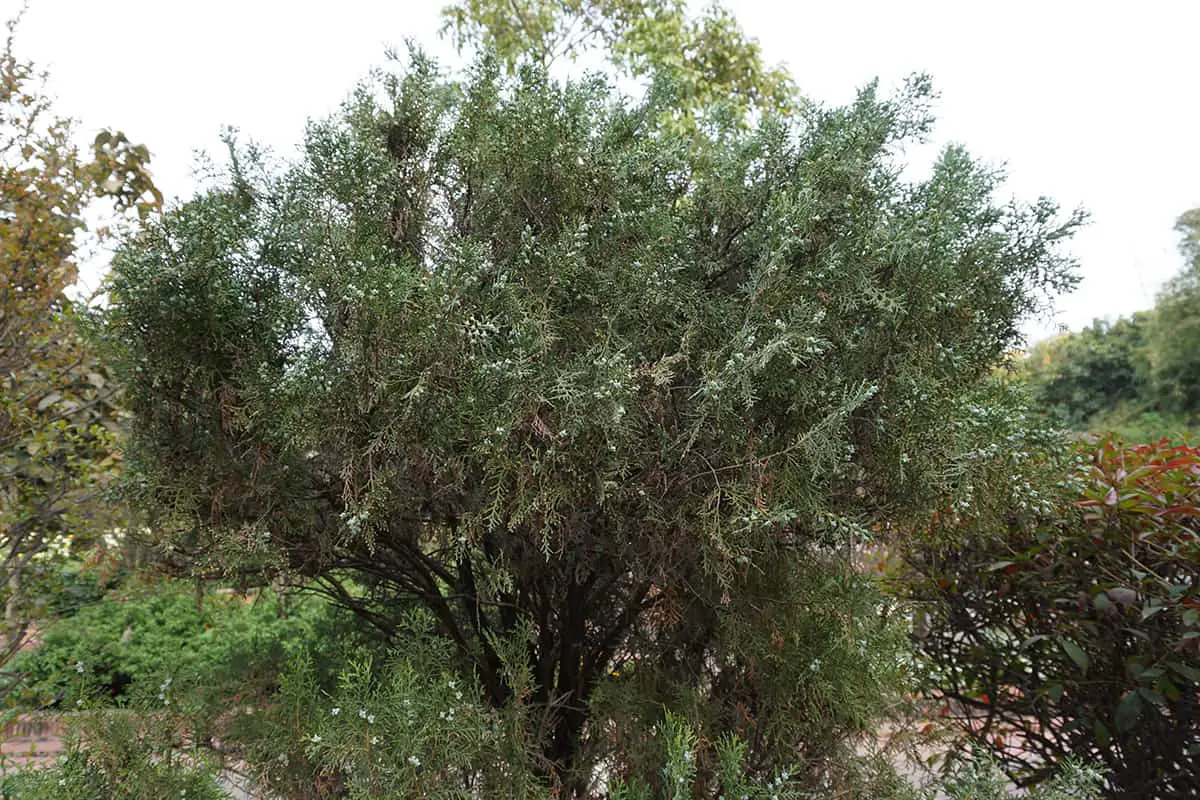
- Botanical name: Cupressus lusitanica
- Common names: Mexican Cypress, White Cedar, Mexican White Cedar
- Plant family: Cupressaceae
- USDA hardiness zone: 9 – 12
- Mature height: Up to 120 feet
- Mature spread: Up to 65 feet
Background
The Mexican Cypress is native to South America and North America, occurring naturally from Panama through to Mexico and into the southern United States. It is a fast-growing evergreen conifer widely cultivated as both an ornamental specimen and for its timber.
The tree can also be used to produce essential oils, which are used in the treatment of headaches, flu, and skin disease. The Mexican Cypress grows at high altitudes of up to around 13000 feet, forming dense forests or scattered amongst mixed conifers.
Physical Qualities
This tree forms a tight cone shape, with dense branches covered in scaly green leaves. The Mexican Cypress flowers are pollinated by the wind, and the following seed cones are oblong and brown when fully mature.
Growing Conditions
This tree grows best in moist, well-draining soils, which are either clay or loamy. Sandy or free-draining soils should be avoided as these won’t supply enough moisture to the roots. Drought can be tolerated by well-established trees but is not ideal. The Mexican Cypress should be grown in partial shade or full sun.
